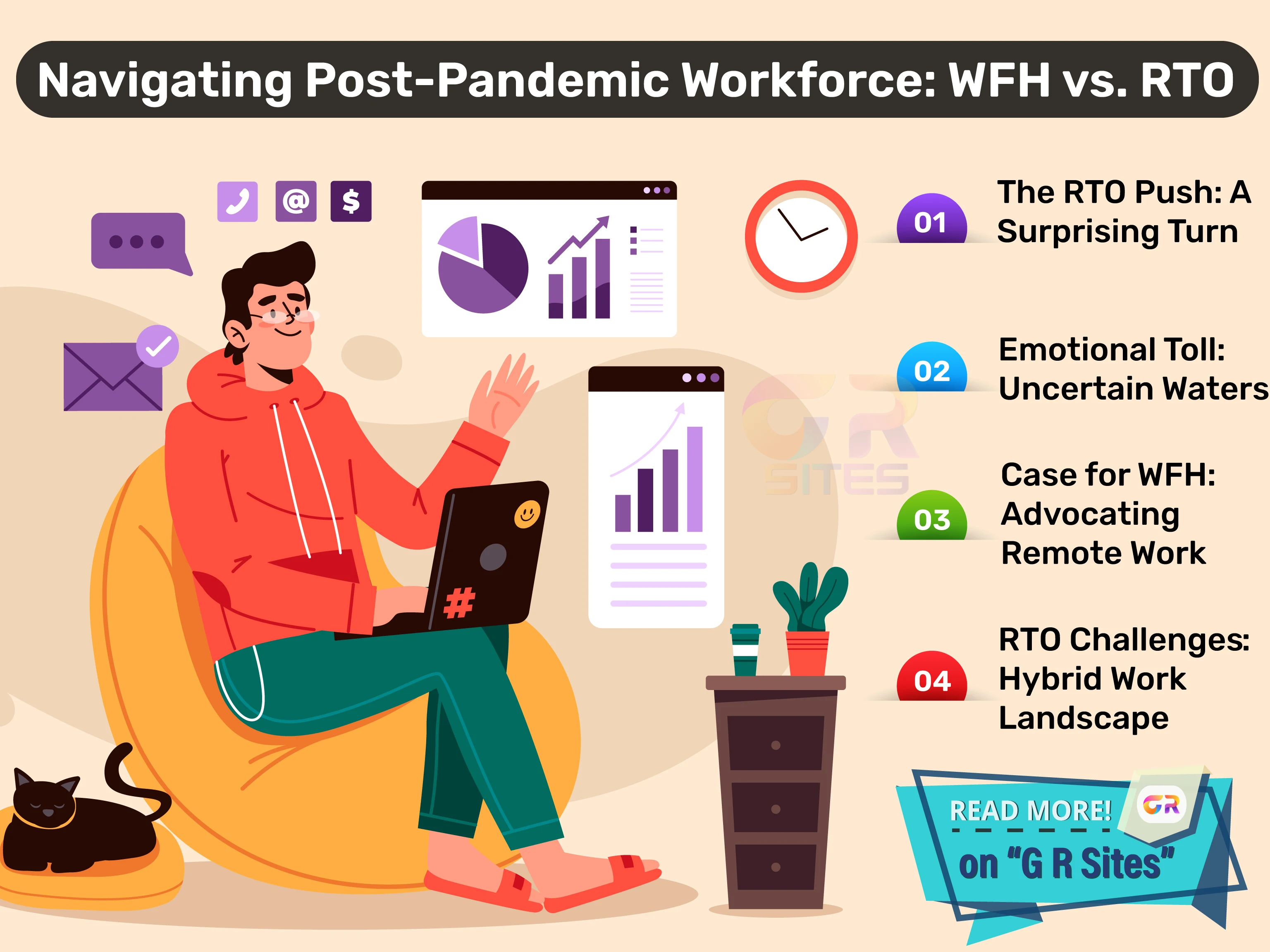In the wake of the pandemic, the work-from-home (WFH) model emerged as a saving grace for many IT professionals, allowing them to maintain productivity without compromising safety. However, as the world gradually reopens, a surprising trend emerges – companies refusing to provide flexible work options and mandating a return-to-office (RTO) model. Let's delve into this phenomenon and explore its impact on the workforce.
- WFH Success Story: Productivity Unleashed - Amidst the chaos of the pandemic, the WFH model proved its mettle, enabling IT professionals to thrive in virtual environments. With the aid of technology and remote collaboration tools, teams seamlessly adapted to remote work, delivering results on par with pre-pandemic levels. The flexibility of the WFH model not only ensured continuity of operations but also prioritized the health and safety of employees.
- The RTO Push: A Surprising Turn of Events - Despite the success and effectiveness of remote work, many companies are now pivoting towards a return-to-office (RTO) model, much to the dismay of their workforce. This sudden shift in company policies has left many employees feeling blindsided and emotionally impacted, as they struggle to reconcile the benefits of remote work with the insistence on a physical return to the office. The RTO push has reignited debates surrounding work dynamics and employee well-being in the post-pandemic era.
- Emotional Toll: Navigating Uncertain Waters - For many IT professionals, the prospect of returning to the office represents a departure from the newfound flexibility and work-life balance afforded by remote work. The emotional toll of this transition cannot be understated, as employees grapple with feelings of anxiety, frustration, and a sense of loss of autonomy. The push for RTO has disrupted routines and upended the delicate work-life balance that many had come to cherish during the WFH era.
The Case for WFH: Why Many Prefer Remote Work
Amidst the push for a return to the office, many IT professionals still staunchly advocate for the WFH model, citing its numerous benefits and advantages:
- Flexibility and Autonomy: Remote work offers unparalleled flexibility, allowing employees to design their workday according to their preferences and schedule. The autonomy afforded by remote work empowers individuals to strike a balance between professional and personal commitments, leading to increased job satisfaction and overall well-being.
- Productivity and Efficiency: Contrary to misconceptions, remote work has been shown to enhance productivity and efficiency, with many employees reporting higher levels of focus and concentration in a remote setting. The absence of office distractions and lengthy commutes allows individuals to channel their energy into meaningful work, resulting in higher output and performance.
- Health and Safety: Amidst lingering concerns about the pandemic, remote work continues to offer a safe and secure alternative to office-based work. By minimizing exposure to crowded spaces and promoting social distancing measures, remote work prioritizes the health and safety of employees, ensuring peace of mind amidst uncertain times.
Challenges and Solutions: Navigating the Hybrid Work Landscape
As companies grapple with the decision between WFH and RTO models, a third option emerges – the hybrid work model. Combining the best of both worlds, hybrid work arrangements offer the flexibility of remote work while facilitating face-to-face interactions and collaboration in the office. By embracing hybrid work solutions, companies can accommodate the diverse needs and preferences of their workforce while maintaining productivity and fostering a culture of innovation and adaptability.
Embracing Change: A Call to Action
As we navigate the evolving landscape of work, it's essential to recognize the importance of flexibility and adaptability in meeting the needs of employees. By embracing remote work options and adopting hybrid work models, companies can position themselves as forward-thinking and employee-centric organizations, attracting top talent and driving innovation in the new era of work.
Conclusion: Striking a Balance in the New Era of Work
The post-pandemic workforce presents both challenges and opportunities for companies and employees alike. While the push for a return-to-office model may be driven by traditional notions of work dynamics, it's essential to recognize the value of flexibility and choice in meeting the diverse needs of today's workforce. Whether it's remote work, a return to the office, or a hybrid work model, the key lies in striking a balance that prioritizes employee well-being, fosters collaboration, and drives organizational success in the new era of work.

No comments:
Post a Comment